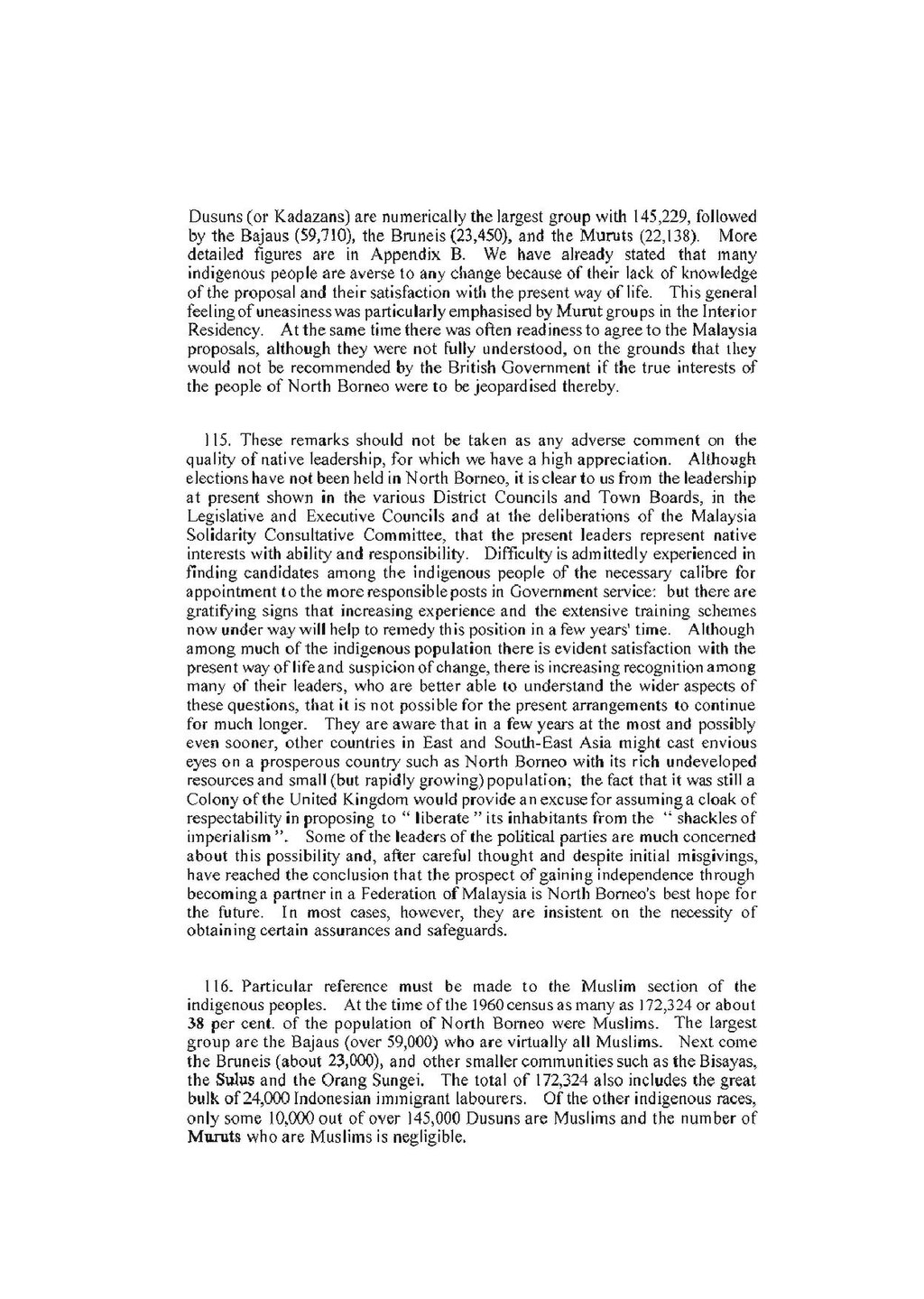Dusuns (or Kadazans) are numerically the largest group with 145,229, followed by the Bajaus (59,710), the Bruneis (23,450), and the Muruts (22,138). More detailed figures are in Appendix B. We have already stated that many indigenous people are averse to any change because of their lack of knowledge of the proposal and their satisfaction with the present way of life. This general feeling of uneasiness was particularly emphasised by Murut groups in the Interior Residency. At the same time there was often readiness to agree to the Malaysia proposals, although they were not fully understood, on the grounds that they would not be recommended by the British Government if the true interests of the people of North Borneo were to be jeopardised thereby.
115. These remarks should not be taken as any adverse comment on the quality of native leadership, for which we have a high appreciation. Although elections have not been held in North Borneo, it is clear to us from the leadership at present shown in the various District Councils and Town Boards, in the Legislative and Executive Councils and at the deliberations of the Malaysia Solidarity Consultative Committee, that the present leaders represent native interests with ability and responsibility. Difficulty is admittedly experienced in finding candidates among the indigenous people of the necessary calibre for appointment to the more responsible posts in Government service: but there are gratifying signs that increasing experience and the extensive training schemes now under way will help to remedy this position in a few years' time. Although among much of the indigenous population there is evident satisfaction with the present way of life and suspicion of change, there is increasing recognition among many of their leaders, who are better able to understand the wider aspects of these questions, that it is not possible for the present arrangements to continue for much longer. They are aware that in a few years at the most and possibly even sooner, other countries in East and South-East Asia might cast envious eyes on a prosperous country such as North Borneo with its rich undeveloped resources and small (but rapidly growing) population; the fact that it was still a Colony of the United Kingdom would provide an excuse for assuming a cloak of respectability in proposing to "liberate" its inhabitants from the "shackles of imperialism". Some of the leaders of the political parties are much concerned about this possibility and, after careful thought and despite initial misgivings, have reached the conclusion that the prospect of gaining independence through becoming a partner in a Federation of Malaysia is North Borneo's best hope for the future. In most cases, however, they are insistent on the necessity of obtaining certain assurances and safeguards.
116. Particular reference must be made to the Muslim section of the
indigenous peoples. At the time of the 1960 census as many as 172,324 or about 38 per cent of the population of North Borneo were Muslims. The largest group are the Bajaus (over 59,000) who are virtually all Muslims. Next come the Bruneis (about 23,000), and other smaller communities such as the Bisayas, the Sulus and the Orang Sungei. The total of 172,324 also includes the great bulk of 24,000 Indonesian immigrant labourers. Of the other indigenous races, only some 10,000 out of over 145,000 Dusuns are Muslims and the number of Muruts who are Muslims is negligible.
